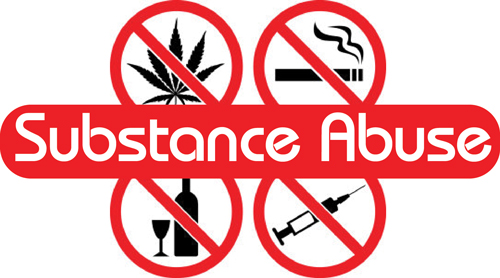
1. Which of the following is not a symptom of continued usage of Opioid drugs?
a) Impaired digestion
b) Loss of weight
c) Sterility
d) Dissolution of tumour
Answer: a
Clarification: Continued usage of Opioid drugs bring about Impaired digestion and absorption, loss of weight, sterility, Chances of respiratory and cardiovascular arrest, poor immunity with repeated infections, blocked veins, hepatitis and HIV infection.
2. The following figure is the chemical structure of ____________

a) Heroin
b) Morphine
c) Cocaine
d) Caffeine
Answer: b
Clarification: The given diagram is the chemical structure of Morphine. It is white, crystalline, bitter and narcotic opioid. It is used in medicine as hydrochloride or sulphate to dull pain, sedation and induces sleep.
3. Which of the following is not an adverse effect on casual opioid users?
a) Reduction in visual activity
b) Drowsiness
c) Impaired attentivity
d) Increased activity and alertness
Answer: d
Clarification: The adverse effects on casual opioid users include drowsiness, Reduction in visual activity, Constriction of the pupil, Impaired attentivity, Apathy or loss of interest in work, Nausea and vomiting, Slowness of action, Slow pulse, Slurred speech, etc.
4. Which of the following drug is given to patients who have undergone surgery?
a) Amphetamines
b) Caffeine
c) Barbiturates
d) Morphine
Answer: d
Clarification: Morphine is a very effective sedative and a painkiller. It is very useful in patients who have undergone surgery as it dulls the pain, cause sedation and induces sleep. Effect of its overdose can be overcome by intravenous naloxone.
5. Which of the following opioids is used as a De-addiction drug?
a) Morphine
b) Codeine
c) Methadone
d) Heroin
Answer: c
Clarification: Methadone is a synthetic opioid used in relieving chronic pain. It is often used as a De-addiction drug for morphine and heroin addicts. However, repeated use may cause addiction.
6. Which of the following drug is commonly known as Smack?
a) Heroin
b) Morphine
c) Codeine
d) Pethidine
Answer: a
Clarification: Heroin is commonly known as smack or brown sugar. It is a semisynthetic white crystalline powdery substance, which is chemically diacetylmorphine and is obtained by the acetylation of morphine.
7. Which of the following is not a method of taking heroin?
a) Snorting
b) Injection
c) Smoking
d) Eye Contact
Answer: d
Clarification: Heroin is generally taken by Snorting, Injections, Smoking and Inhaling. Addicts dilute the drug before use. It was at one time used as a strong analgesic and cough depressant but because it was highly addictive, it was banned.
8. Which of the following is not a withdrawal effect of taking heroin?
a) Twitching
b) Muscular cramps
c) Sterility
d) Vomiting
Answer: c
Clarification: Withdrawal effects are very unpleasant including vomiting, diarrhoea, twitching, abdominal and muscular cramps, excessive perspiration, etc. Dilutants may additionally cause several side effects.
9. Which of the following opioid is also used as a local anaesthetic?
a) Morphine
b) Codeine
c) Pethidine
d) Methadone
Answer: c
Clarification: Pethidine is a synthetic opioid used as a local anaesthetic which provides sedation and euphoria. Pethidine is used in suppressing pain in many surgical procedures. It is often abused. Addicts may show tremors, twitching, confusion and dilated pupils.
10. Stimulants are the drugs which suppress brain functions, relieve intense pain and produce temporary euphoria.
a) True
b) False
Answer: b
Clarification: Stimulants are drugs which provide excitement and make a person more active and wakeful. Addiction leads to psychological dependence. Physical or physiological dependence is absent. Withdrawal leads to restlessness, depression and anxiety.
11. Which of the following product does not contain caffeine?
a) Tea
b) Coffee
c) Milk
d) Cocoa
Answer: c
Clarification: Caffeine is a white crystalline bitter alkaloid. It is present in Tea, Coffee, Cocoa, Cola and other non-alcoholic beverages. In small quantities, as contained in these drinks, caffeine brings about a refreshing change.
12. Which of the following is a diuretic drug?
a) Morphine
b) Barbiturates
c) Codeine
d) Caffeine
Answer: d
Clarification: Caffeine is a diuretic drug which increases the amount of water passed from urine. There is also an increase in glucose and free fatty acid contents of blood. It is helpful in managing migraine.
13. Which of the following is not a side effect of using caffeine in excess?
a) Sleeplessness
b) Indigestion
c) Hypersomnia
d) Anxiety syndrome
Answer: c
Clarification: Caffeine is harmful when used in excess, it causes indigestion, sleeplessness, disturbed functioning of pancreas and kidneys and development of anxiety syndrome. Non-availability causes headache, anxiety and loss of concentration.
14. Amphetamines are synthetic analogues of adrenaline.
a) True
b) False
Answer: a
Clarification: Amphetamines are synthetic activators of sympathetic nerves bringing about increased activity and alertness. These are also known as synthetic analogues of adrenaline. Common amphetamines include Methedrine, Dexedrine and Benzedrine.
15. Which of the following drugs are commonly known as Anti-sleep pills?
a) Amphetamines
b) Barbiturates
c) Cocaine
d) Diacetylmorphine
Answer: a
Clarification: Amphetamines are commonly known as Anti-sleep pills. They are used by some people to work continuously for hours or to reduce weight. However, mental capacity is reduced. These drugs are addictive by nature. They bring about sleeplessness, depression and reduced appetite.
